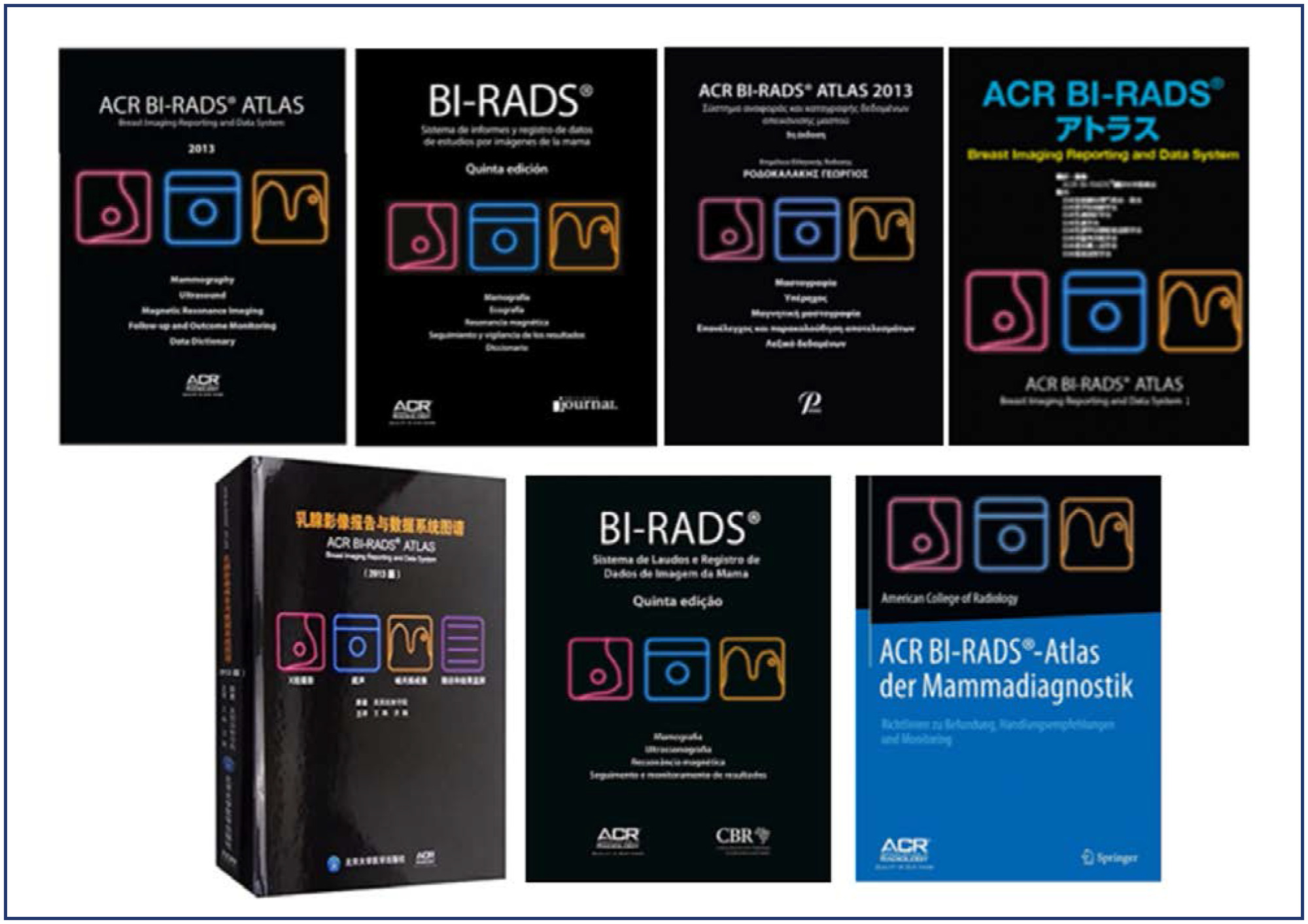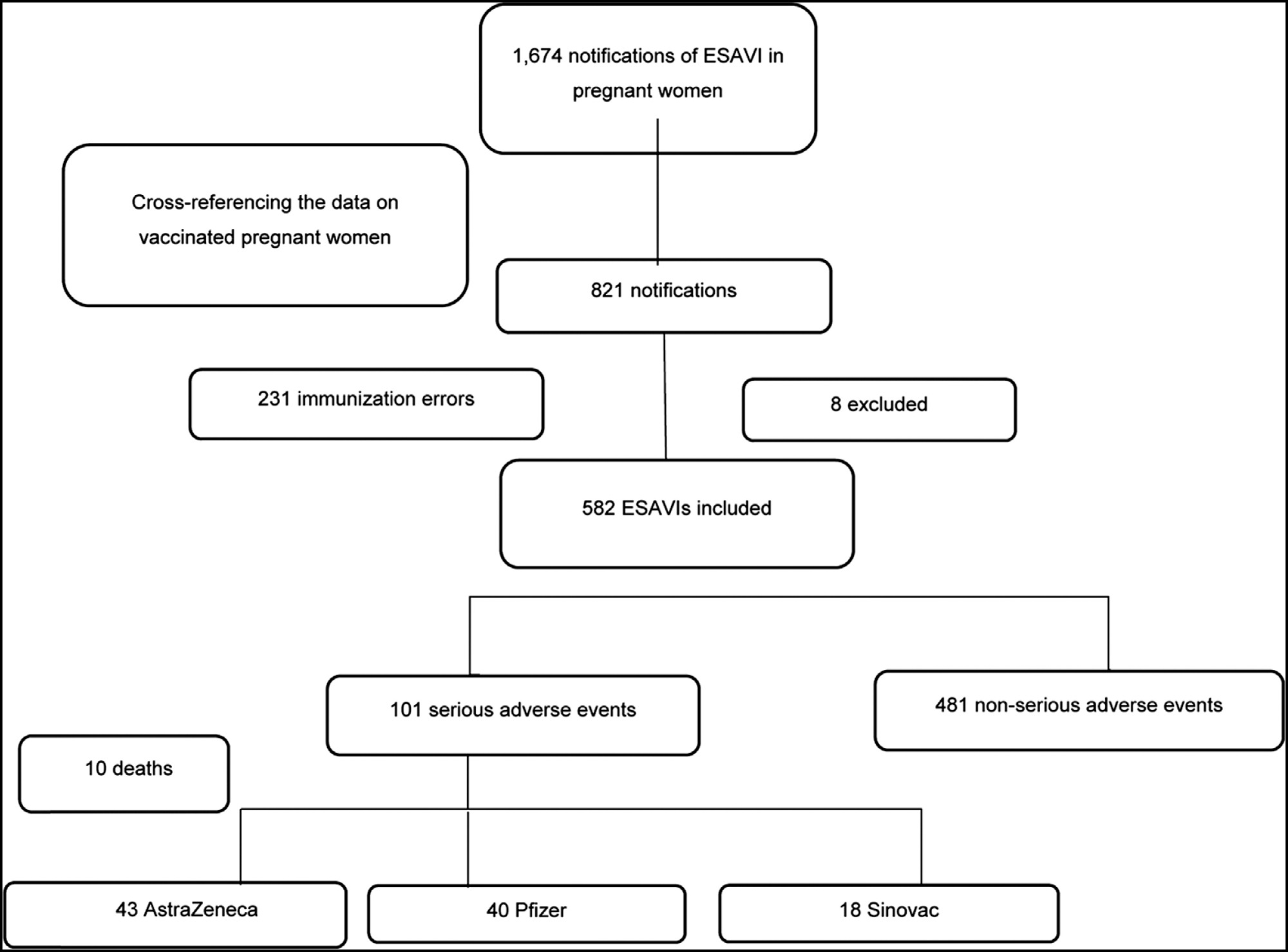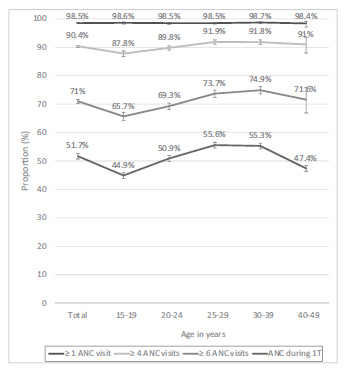Summary
Rev Bras Ginecol Obstet. 2024;46:e-rbgo6
BI-RADS® is a standardization system for breast imaging reports and results created by the American College of Radiology to initially address the lack of uniformity in mammography reporting. The system consists of a lexicon of descriptors, a reporting structure with final categories and recommended management, and a structure for data collection and auditing. It is accepted worldwide by all specialties involved in the care of breast diseases. Its implementation is related to the Mammography Quality Standards Act initiative in the United States (1992) and breast cancer screening. After its initial creation in 1993, four additional editions were published in 1995, 1998, 2003 and 2013. It is adopted in several countries around the world and has been translated into 6 languages. Successful breast cancer screening programs in high-income countries can be attributed in part to the widespread use of BI-RADS®. This success led to the development of similar classification systems for other organs (e.g., lung, liver, thyroid, ovaries, colon). In 1998, the structured report model was adopted in Brazil. This article highlights the pioneering and successful role of BI-RADS®, created by ACR 30 years ago, on the eve of publishing its sixth edition, which has evolved into a comprehensive quality assurance tool for multiple imaging modalities. And, especially, it contextualizes the importance of recognizing how we are using BI-RADS® in Brazil, from its implementation to the present day, with a focus on breast cancer screening.

Summary
Rev Bras Ginecol Obstet. 2024;46:e-rbgo17
To determine the prevalence of anxiety, depression and burnout in residents of Gynecology and Obstetrics during COVID-19 pandemic in Brazil and its associated factors.
Cross-sectional study involving all regions of Brazil, through the application of a sociodemographic questionnaire, the Hospital Anxiety and Depression Scale (HAD) and the Maslach Burnout Inventory (MBI-HSS) instrument. Multivariate analysis was performed after adjusting the Poisson model.
Among the 719 participating medical residents, screening was positive for anxiety in 75.7% and for depression in 49.8% of cases. Burnout syndrome was evidenced in 41.3% of the physicians studied. Those with depression are more likely to have anxiety (OR 0.797; 95%CI 0.687 - 0.925) and burnout syndrome (OR 0.847 95%CI 0.74 - 0.97). Residents with anxiety (OR 0.805; 95%CI 0.699 - 0.928) and burnout (OR 0.841; 95%CI 0.734 - 0.963) are more likely to have depression.
High prevalence of anxiety, depression and burnout were found in residents of Gynecology and Obstetrics in Brazil, in addition to important correlations between anxiety-depression and depression-burnout.
Summary
Rev Bras Ginecol Obstet. 2022;44(9):821-829
Regulations for the vaccination of pregnant women in Brazil occurred in March 2021. Despite the absence of robust data in the literature on the coronavirus disease 2019 (COVID-19) vaccinations in pregnant women, it is understood that the benefit-risk ratio tends to be favorable when considering the pandemic and the high burden of the disease. However, it is still important to monitor for Events Supposedly Attributable to Vaccination or Immunization (ESAVI) and to draw safety profiles of the different platforms used in pregnant and postpartum women. The present study aims to describe the main characteristics of ESAVIs related to COVID-19 vaccines occurring in pregnant women in the first months of the vaccination campaign in Brazil. During the evaluation period, 1,674 notifications of ESAVIs in pregnant women were recorded, and 582 notifications were included for the analysis. Of the 582 ESAVIs identified, 481 (82%) were classified as non-serious adverse events and 101 (17%) as serious adverse events. Ten deaths were identified, including one death which was considered to be causally related to the vaccine. The other nine maternal deaths had causality C, that is, without causal relationship with the vaccine, and most were due to complications inherent to pregnancy, such as pregnancy-specific hypertensive disorder (PSHD) in 4 cases and 3 due to COVID-19. Despite some limitations in our study, we believe it brings new insights into COVID-19 vaccines in this group and will add to the available evidence.

Summary
Rev Bras Ginecol Obstet. 2022;44(7):686-691
To review literature and estimate the occurrence of preeclampsia and its complications in Brazil.
We performed an integrative review of the literature, and included observational studies published until August 2021 on the SciELO and PubMed databases that evaluated preeclampsia among pregnant women in Brazil. Other variables of interests were maternal death, neonatal death, hemolysis, elevated liver enzymes, and low platelet count (HELLP) syndrome, and eclampsia. Three independent reviewers evaluated all retrieved studies and selected those that met inclusion criteria. A metanalysis of the prevalence of preeclampsia and eclampsia was also performed, to estimate a pooled frequency of those conditions among the studies included.
We retrieved 304 studies after the initial search; of those, 10 were included in the final analysis, with a total of 52,986 women considered. The pooled prevalence of preeclampsia was of 6.7%, with a total of 2,988 cases reported. The frequency of eclampsia ranged from 1.7% to 6.2%, while the occurrence of HELLP syndrome was underreported. Prematurity associated to hypertensive disorders ranged from 0.5% to 1.72%.
The frequency of preeclampsia was similar to that reported in other international studies, and it is increasing in Brazil, probably due to the adoption of new diagnostic criteria. The development of a national surveillance network would be essential to understand the problem of hypertensive disorders of pregnancy in Brazil.

Summary
Rev Bras Ginecol Obstet. 2020;42(12):793-799
To find out which was the opinion of residents in obstetrics and gynecology about the advantages and disadvantages of medical abortion as compared with surgical procedures.
Cross-sectional multicenter study among residents in obstetrics and gynecology from 21 maternity hospitals located in 4 different geographical regions of Brazil, using a self-responded questionnaire with 31 questions related to their opinion and experience on providing abortion services.
Most residents agreed that “being less invasive” (94.7%), “does not require anesthesia” (89.7%), “can be accompanied during the process” (89.1%), “prevents physical trauma” (84.4%) were the main advantages of medical abortion.
Residents perceived both clinical and personal issues as advantages of medical abortion.
Summary
Rev Bras Ginecol Obstet. 2016;38(8):391-398
This study was conducted to determine the seroprevalence of HIV among pregnant women in Brazil and to describe HIV testing coverage and the uptake of antenatal care (ANC).
Between October 2010 and January 2012, a probability sample survey of parturient women aged 15-49 years who visited public hospital delivery services in Brazil was conducted. Data were collected from prenatal reports and hospital records. Dried blood spot (DNS) samples were collected and tested for HIV.We describe the agespecific prevalence of HIV infection and ANC uptake with respect to sociodemographic factors.
Of the 36,713 included women, 35,444 (96.6%) were tested for HIV during delivery admission. The overall HIV prevalence was of 0.38% (95% confidence interval [CI]: 0.31-0.48), and it was highest in: the 30 to 39 year-old age group (0.60% [0.40- 0.88]), in the Southern region of Brazil (0.79% [0.59-1.04]), among women who had not completed primary (0.63% [0.30-1.31]) or secondary (0.67% [0.49-0.97]) school education, and among women who self-reported as Asian (0.94% [0.28-3.10]). The HIV testing coverage during prenatal care was of 86.6% for one test and of 38.2% for two tests. Overall, 98.5% of women attended at least 1 ANC visit, 90.4% attended at least 4 visits, 71% attended at least 6 visits, and 51.7% received ANC during the 1st trimester. HIV testing coverage and ANC uptake indicators increased with increasing age and education level of education, and were highest in the Southern region.
Brazil presents an HIV prevalence of less than 1% and almost universal coverage of ANC. However, gaps in HIV testing and ANC during the first trimester challenge the prevention of the vertical transmission of HIV. More efforts are needed to address regional and social disparities.

Summary
Rev Bras Ginecol Obstet. 2015;37(8):374-380
DOI 10.1590/SO100-720320150005394
To identify the impact of urinary incontinence (UI) on quality of life (QoL), to compare the scores of QoL domains in women with stress urinary incontinence (SUI), overactive bladder (OAB) and mixed incontinence (MUI) and to establish the association between the clinical type of UI and the impact on QoL.
Data of 181 incontinent women attended at a public hospital were collected regarding age, body mass index (BMI) and co-morbidities. King's Health Questionnaire (KHQ) was applied and patients were classified into two groups according to the self-assessment of incontinence impact. KHQ scores were compared by the Mann-Whitney test. Depending on their urinary symptoms, women were divided into SUI, OAB and MUI groups and their scores in the KHQ domains were compared by the Kruskal-Wallis and Dunn tests. The odds ratio (OR) of a woman reporting a worse effect of UI on QoL was estimated using the binary logistic model. The control variables were: age, BMI and number of co-morbidities.
A significant difference was found between the two groups of self-assessment of UI impact for all KHQ domains. The MUI group showed worse scores than the SUI group for all domains, and OAB group, for limitation of physical and daily activities. There was a significant difference between the odds of the women in the SUI and MUI groups reporting worse effects of UI on QoL (OR=2.9; p=0.02).
As reported at other reference services, MUI was the most commom type, and urinary loss had a moderate/major impact on QoL, affecting mainly role limitations domain. The adjusted analysis showed that women with MUI had almost three times greater odds of reporting worse impact on QoL than women with SUI.
Summary
Rev Bras Ginecol Obstet. 2015;37(8):388-392
DOI 10.1590/SO100-720320150005319
To describe the mortality of female breast cancer in Brazil according to color, in the years 2000 and 2010.
A descriptive study in which demographic data were obtained from the Brazilian Institute of Geography and Statistics (IBGE). The breast cancer death information in Brazil was collected from the Ministry of Health through the Mortality Information System (SIM). The crude mortality rates for female breast cancer were calculated according to color and age group, up to 49 years and ≥50 years. The results obtained were distributed into five geographical regions of the country (North, Northeast, Midwest, South and Southeast).
In Brazil, in women aged 50 or more, the highest crude mortality rates of breast cancer in 2000 were 62.6/100,000, 46.0/100,000 and 29.7/100,000 among yellow, white and black women, respectively. In women under 50 years in 2000, the crude mortality ranged from 2.0/100,000 among indigenous women to 6.8/100,000 among white women. After ten years, in women over 50 years, the crude mortality rate among yellow, white and black women was 21.5, 53.2 and 40.4 per 100,000, respectively. In the country's regions, the highest mortality rates of breast cancer were observed in white and black women from the South and Southeast. In the Northeast, mortality rates in black and brown women doubled in 2010.
Breast cancer mortality rates show ethnic and geographical variations. However, it is not possible to exclude the possibility that large variations have occurred as a result of improvement in the quality of information on mortality in the country.
Search
Search in:
breast (42) breast cancer (42) breast neoplasms (95) Cesarean section (72) endometriosis (66) infertility (56) Maternal mortality (43) menopause (82) obesity (58) postpartum period (40) pregnancy (225) Pregnancy complications (99) Prenatal care (68) prenatal diagnosis (50) Prevalence (41) Quality of life (51) risk factors (94) ultrasonography (79) urinary incontinence (40) women's health (48)